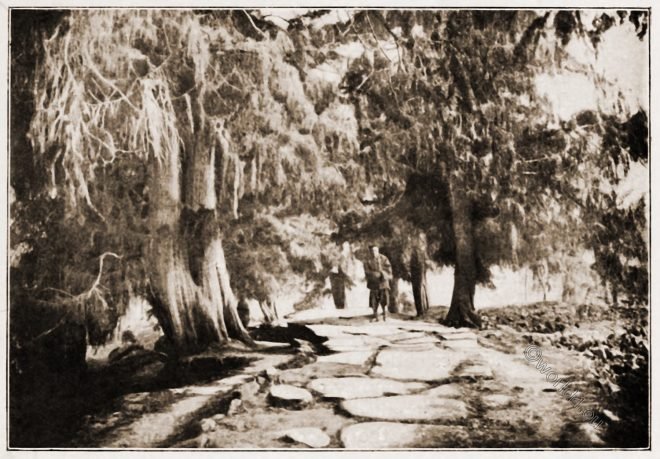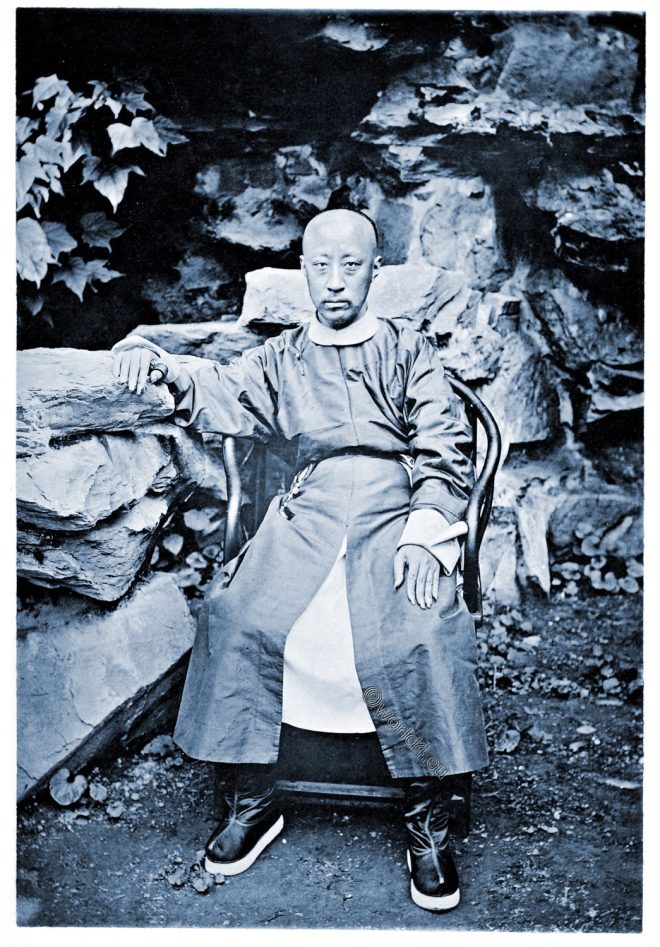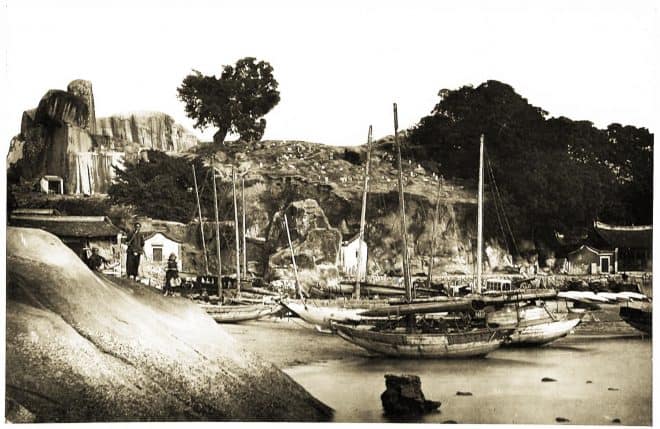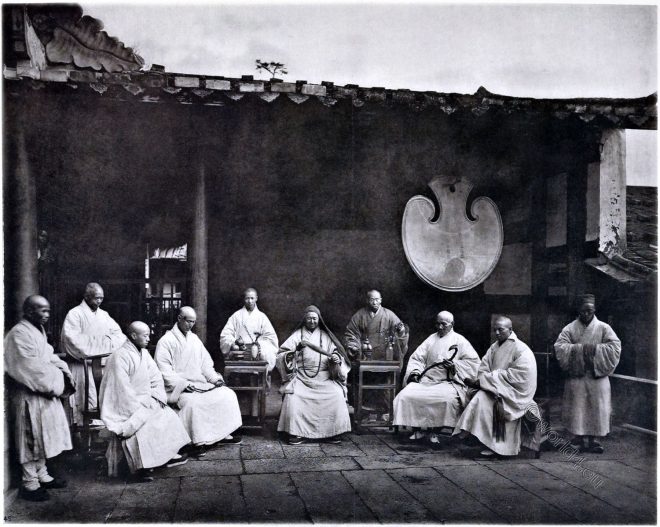The travelling Barge, of the Mandarin Van-tazhin, who attended the Embassy.
Tag: Chinese scenery
China, in a series of views, displaying the scenery, architecture, and social habits, of that ancient empire by Thomas Allom.
The great imperial stone road from Peking to Chengtu.
Chinese pictures: notes on photographs made in China by Isabella Lucy Bird.
Chinese peasants with children from the northern provinces.
A peasant with his wife and family. The feet of children are prevented from growing large. The Mother is in the dress of the northern provinces.
Prince Gong. Yixin, Prince Gongzhong of the First Rank
PRINCE KUNG. Illustrations of China and its people: a series of two hundred photographs, with letterpress descriptive of the places and people represented by John Thomson.
Inhabitants of Xiamen, China. 19th c.
Inhabitants of the south chinese city Xiamen at the end of the 19th century.
View of the Yuenfu Monastery near Foochow (now Fuzhou), China 1871.
Yuen-fu Monastery Cave, Fukien province, China. THIS Buddhist monastery is remarkable rather for its romantic situation than for any historical associations. Illustrations of China and its people by John Thomson.
Amoy Harbour. The Port of Xiamen in 19th century.
Amoy, today Xiamen, Fujian Province China, was one of the earliest ports to which foreigners resorted.
The Abbot and Monks of Kushan Monastery about 1870.
The similarity between the Buddhist faith and the Roman Catholic churches may be traced even more minutely than this. “Buddhists everywhere have their monasteries and nunneries, their baptism, celibacy and tonsure, their rosaries, chaplets, relics, and charms, their fast-days and processions, their confessions, mass, requiems, and litanies, and, especially in Tibet, even their cardinals, and their pope.”
Old bridge in Chao-Chow-Fu, Guangdong, China.
Guangji Bridge (Chaozhou). Kwangtung province, China.
Chinese Pagoda, Kwangtung Province, on the right bank of the Han river.
The one shown here stands on the right bank of the Han river, near Chao-chow-fu, and, like all the best examples of such edifices, the whole ground structure up to the first story is composed of stone.










